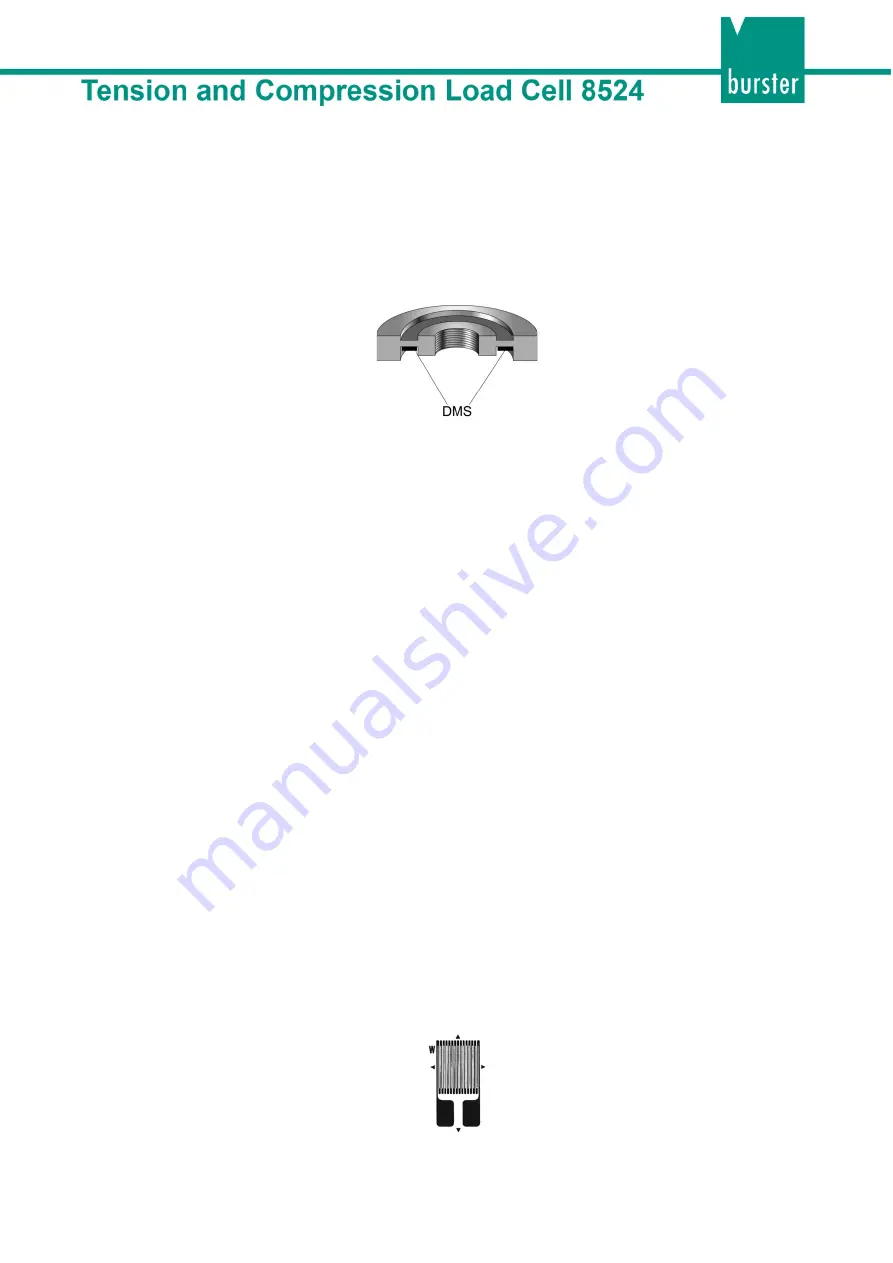
11
of 24
3
Concept and general information
Please refer to the data sheet for the model 8524 precision tension and compression load cell for full
details of dimensions, weight, degree of protection etc.
3.1 Mechanical design
In the model 8524 tension and compression load cell, the spring element is designed as a horizontally
oriented elastic membrane with a centrally arranged ring.
Figure 1:
Horizontally oriented membrane
This elastic membrane is deflected by the applied force, resulting in a reduction in the height of the
sensor. This deformation cannot be seen by the naked eye. It is measured with the aid of strain gages. In
the model 8524 tension and compression load cell, the strain gages are mounted on the underside of the
spring element. As a result, they are subject to the same deformation as the spring element.
3.2 Principle of operation
The model 8524 tension and compression load cell utilizes a spring element. The spring element is
elastically deformed by the force being measured.
Strain gages are used to convert this deformation into an electrical signal. The strain gages and spring
element together constitute the measuring element.
3.2.1 Spring element
The spring element is the most important mechanical part of a load cell. Its purpose is to take the force
being measured and convert it into a linear extension. It relies on the elastic properties of the material in
order to determine the force indirectly.
The materials of which load cells are made must satisfy other conditions in addition to their elastic
properties. As a result, only a small number of carefully selected materials come into question for high-
quality load cells.
burster goes a step further, using mainly aviation materials that satisfy additional quality requirements
instead of DIN materials.
3.2.2 Strain gages
The electrical resistance of a wire rises with increasing length and falling cross-section. When a wire is
pulled, it becomes thinner and longer – both of these effects result in an increase in its electrical
resistance.
This is the principle on which strain gages are based. In practice, however, strain gages do not consist of
a single wire, but of a metal foil laminated onto a carrier material. The metal foil is etched to create a
meandering structure (see Abbildung 2).
Figure 2:
Foil strain gage
Содержание 8524
Страница 3: ...3of 24...










































